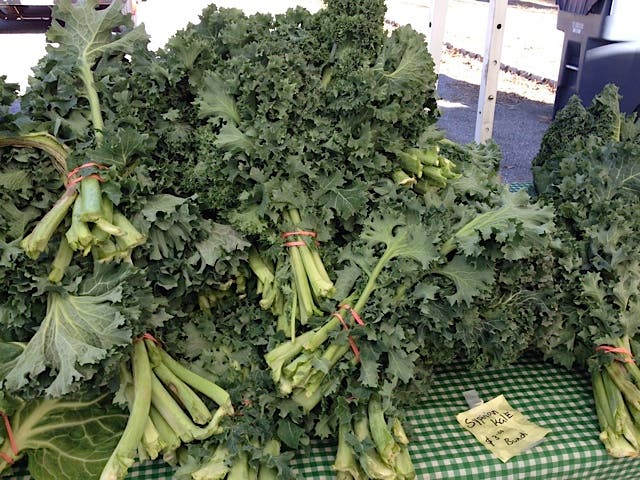Farmers' Market Find: Siberian Kale


When I was growing up in Virginia, kale was kale. It was different from collards, mustards, and turnip salad (what my family calls turnip greens). There was only one variety of curly-leafed kale, which you boiled for a long, long time, usually with some smoked pork and a lot of liquid.
And then the kale craze hit. Nowadays, people don’t just boil kale. They steam it, sauté it, roast it into chips, and eat it raw. You’re more likely to find dinosaur, Tuscan, or cavolo negro kale (all the same thing) at a natural food store chain than the old-fashioned curly kale. Fancy supermarkets carry clamshell packets of baby kale for salads.
Turns out, the trend has even made it to small farmers’ markets. I recently came across Siberian kale, yet another variety I was unfamiliar with. (The vegetable is still such a novelty there that the vendor didn’t know how to spell it. It took a few pronunciation tries and a quick Google search to figure out that “Sypirian” was “Siberian.”)
I bought three big bunches and gave them a try in three different recipes: Crispy Kale Leaves, Kale Salad with Pomegranate and Maple Pecans, and Colcannon. The only one I wouldn’t recommend Siberian kale for is the Crispy Kale Leaves. In fact, Siberian kale is a little too leafy and tender to make satisfyingly crunchy bites. Otherwise, the leaves’ sweet taste and delicate texture are a perfect fit for the remaining two recipes. I’ll definitely be on the lookout for Siberian (also called Russian) kale again.